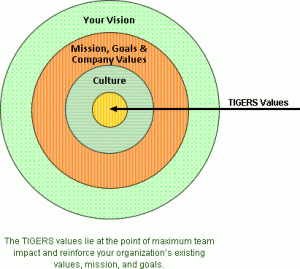 Employee engagement is important for U.S. government agency performance. According to new research, engagement appears even more important for local and state government as disengaged employees reportedly cost the U.S. up to $100 billion annually. According to Gallup’s research findings reported in the article, Unhappy State, Local Government Workers Cost U.S. Billions, 71 percent of state and local government workers are disengaged. With these workers contributing 11 percent to the U.S. GDP, that’s a major loss to the U.S. economy and to the efficiency of your tax dollars. It appears that improving happiness to increase engagement is an important initiative, when leaders have access to well-vetted resources that pin point core behavior that is strangling government work group productivity and happiness.
Employee engagement is important for U.S. government agency performance. According to new research, engagement appears even more important for local and state government as disengaged employees reportedly cost the U.S. up to $100 billion annually. According to Gallup’s research findings reported in the article, Unhappy State, Local Government Workers Cost U.S. Billions, 71 percent of state and local government workers are disengaged. With these workers contributing 11 percent to the U.S. GDP, that’s a major loss to the U.S. economy and to the efficiency of your tax dollars. It appears that improving happiness to increase engagement is an important initiative, when leaders have access to well-vetted resources that pin point core behavior that is strangling government work group productivity and happiness.
Although engagement levels vary by state, some leaders are excelling. For example, in some pockets in Mississippi, engaged employees outnumber disengaged employees by almost 3-to-1. Other states don’t fare as well with their workforce comprised by one disengaged employee for every engaged employee. If your response is “So what?”, do think again. Disengaged employees will eventually pull down the performance of engaged employees so this is a cancerous team issue worth curing. More and more evidence points to the fact that when you improve happiness in an agency, you also increase engagement when both the work environment and good leadership skills are addressed.
How to avoid trying to hit the engagement target blindfolded
At TIGERS Success Series, our vetting process included independent evaluation by both business and government agencies. We learned that engagement is an obscure target. True engagement is a byproduct of an employee’s intrinsic motivation that becomes frustrated by leadership and work environment problems. We also learned that when the work environment resonates with behaviors that support trust, interdependence, genuineness, empathy, risk resolution and success in the workplace, employees are happier, which leads to improved engagement and productivity. When the work environment is measurably missing one of these six principles, there are predictable outcomes – like disengagement. So instead of trying to hit a target blindfolded, the number one thing you can do to assess why disengagement is an issue in your work group or agency is to measure the quality of these six principles in your workforce behavior. If trust is low, for example, there are steps you can take and training to deploy that measurably improves the work culture in ways where it is easy to identify your return on investment (ROI).
With the staggering dollar amount that disengaged public workers cost the U.S. economy, it’s imperative that national, state and local government Directors build their leadership skills and implement team building practices that improve employee happiness and engagement. In addition to vetted diagnostic, there are four additional ways to favorably impact engagement.
4 practices to recover employee happiness and engagement
Explain their role.
Many employees become disengaged with their work when they don’t feel that their work is valued, appreciated or essential. In reality, every employee’s role is (or should be) essential for the agency’s success, or those positions wouldn’t exist. In a financially balanced and efficient workplace, every role serves an important purpose and is directly tied to budget line items.
To improve engagement levels, leaders must explain why the employee’s role matters when they bring new employees on board. Then excellent performance must be recognized. Once an employee has a clear understanding of how their performance matters to the agency, it is possible to feel more connected to their work, which improves engagement when trust, interdependence, genuineness, empathy, risk and success are readily experienced and seen in agency behavior.
Create an inviting workplace.
One area of influence that agency leaders have because of their leadership position is the work environment they build. An inviting work environment plays a substantial role in the happiness of employees. As a Director, it’s your job to cultivate a trustworthy, cooperative, genuine, empathetic, risk resolving and successful work environment. When employees feel welcomed and at ease at work, they measurably perform better, improve productivity and increase their own job satisfaction. Employee behavior norms building activities, give employees the opportunity to build better co-worker relationships, focus on behaviors that measurably improve happier work interactions and support improved communication and cooperation. When employees experience improved connections and relationships with one another, work efforts and roles become more positive. The behavior of toxic employees also becomes more noticeable as they continue to stir the disengagement pot and violate the group norms of behavior that employees have identified. The bottom line is that toxic employees wreak havoc on a workplace and likely need to be removed if coaching does not change their behaviors.
Create a culture of recognition and gratitude.
People who are recognized for the work they do and who possess attitudes of gratitude and appreciation are happier and more satisfied in the workplace and with their life. While it’s great to have goals and strive for more, delaying recognition antagonizes engagement and success.
Success is much more than achieving goals. It also comes with a felt sense of personal satisfaction that fades over time when left unrecognized. To promote happiness in your workplace, celebrate success and recognize people privately for exceptional achievements. Then recognize the department as a whole for the cooperation employees contributed to satisfy goals that met or exceeded expectations and deadlines.
Let go of perfection.
Achieving perfection is not possible, and the sooner agency leaders realize this, the happier everyone will be. Expecting perfection leads to micro management, which has a direct correlation to disengagement. As a leader, it’s important to have standards and to encourage your employees to meet or exceed those standards. Expect excellence, not perfection and use mistakes as learning opportunities to build greater success one step at a time.
The bottom line is that disengaged employees cost the U.S. economy billions annually. Seventy-one percent of state and local government employees are currently disengaged, which can cost up to $100 billion annually in lost productivity. With vetted workforce behavior assessment and subsequent strategic team behavior norm identification activities, engagement can be measurably improved. You will immediately notice how easy it is to identify behavior norms by how employees treat one another and their service constituents. Some additional practices include: explaining each employee’s role on an individual basis so they understand how their role makes a difference; creating an inviting workplace that welcomes and values all of its employees; creating a culture of recognition and gratitude where leaders and employees recognize the great things they’ve achieved; and letting go of the idea of perfection and replacing it with the expectation of excellence.
Here are some additional resources to broaden this conversation:
- Gallup: Unhappy State, Local Government Workers Cost U.S. Billions
- Vetted work behavior assessment that measures the quality of trust, interdependence, genuineness, empathy, risk and success in group behavior.
- Group Facilitation Resources To Develop and Identify Group Norms that support trust, interdependence, genuineness, empathy, risk resolution and success in workplace norms
- White Paper: Why Happiness Matters in the Workforce and Beyond
 About TIGERS Success Series
About TIGERS Success Series
TIGERS Success Series is a Bend, Oregon Leadership and Team Improvement Consultant that helps committed leaders build more cooperation among employees and collaboration between departments for improved growth and revenue.
We do this by deploying the TIGERS team process that improves workforce behaviors that are anchored by trust, interdependence, genuineness, empathy, risk resolution and success. Providing diagnostics and customized team interventions, you can improve both work culture and transform your adequate teams into exceptional ones. We also license and train HRD Executives, Project Managers, Managers, Trainers and Coaches in the use of our award winning resources. For more information, call 1+ 541-385-7465.